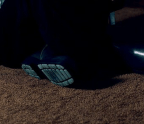
AnOther Loves











If Chanel's present is housed — as it always was — on the rue Cambon in the centre of Paris, where Gabrielle Chanel first founded her fashion business in 1910, its history now resides in Pantin, a commune on the outskirts of the city. The building — called the Patrimoine, which literally translates as ‘heritage’ — rises from long, waving grass that recalls Chanel's childhood home of Aubazine, where she grew up in an orphanage, a history she herself tried to hide but which indelibly shaped her identity and fashion. By contrast, the house that bears her name makes no attempt to hide its history. Chanel's clothes are embedded with codes that can trace their distinct lineage and language from Gabrielle Chanel's mind's eye, through the work of her longest-serving and most unruly disciple, Karl Lagerfeld, through to Virginie Viard, who helms the house today. You could call it a fashion manifesto — and, indeed, Chanel does. The phrase forms half of the title of an exhibition that debuted at Paris's Palais Galliera in 2020, a reiteration of which has just opened at London's Victoria and Albert Museum. In charting Gabrielle Chanel's life, it examines her philosophy of style and her seemingly endless inventions.
“That word, manifesto … I stood on a cliff, thinking over that,” says Amanda Harlech, a woman who has spent more than 25 years examining Chanel's life and work alongside Lagerfeld and Viard. “But it really was a manifesto. A shattering audacity. She's so convinced and is therefore so convincing of what she believes. And that's very much a manifesto, this idea of, ‘I'll stand here — I will stand on this soapbox, spiritually, and hold forth.'” Those ideas are echoed by Oriole Cullen, the V&A's curator of modern textiles and fashion and curator of the museum's Gabrielle Chanel. Fashion Manifesto show. “What Chanel is doing is really going against the grain, from very early on, and suggesting things that are profoundly different to what is in fashion. But it's an innate process, and she is driving it. And in part she's driving it because she has real assurance in what she wears herself, and what she needs.”
What was Chanel convinced of? Right from the start, she was convinced that clothes for women should follow the lines of those for men. That included literal borrowings from the male wardrobe — there are photographs of Chanel in the early 1910s wearing a masculine bow tie, and others from 1928 where she's dressed in a sweater and tweed blazer belonging to her lover at the time, the Duke of Westminster. “Everybody gives credit to the Duke of Westminster, but I would say she was already there,” Harlech says — pointing out a picture of


